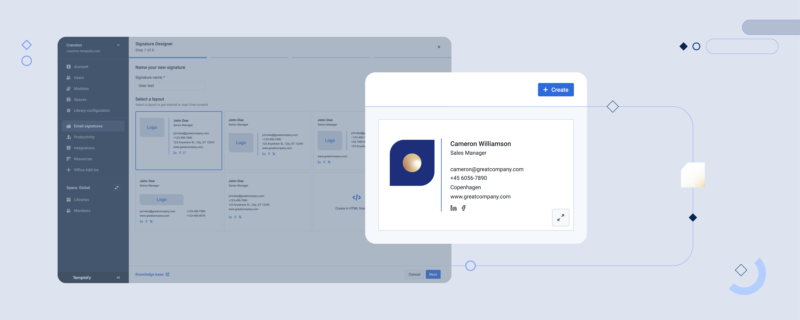A nationwide medical care operator loses nearly a million documents related to patients’ medical records, after an error of sending them to storage rather than delivery. Thousands of ongoing surgeries across the country are affected, and millions spent to retrieve the lost documents.
A major credit rating agency does not keep loan borrower’s sensitive customer data in an encrypted and secure system. Personal documents belonging to clients revealing their names, Social Security numbers, addresses, and other private details are accessed by third parties, causing a major breach.
This is what can happen when the enterprise IT team overlooks a robust enterprise document management system. Loss of data in the event of disaster, time and cost overruns, communication gaps, dissatisfied customers, and even legal and regulatory damage are the risks that businesses run when they do not have a solution for document organization, document storage, and document distribution.
Content disasters can manifest slowly but surely too. An enterprise document management system that doesn’t account for having brand integrity and consistency in corporate documents can make an enterprise look unprofessional and may scare away key potential B2B clients and investors. Catching it early can help.
Read more about the Templafy Enterprise document management solution
For example:
- A leading supplier of healthcare products issues a brand relaunch. It means new templates for all corporate documents, but there is limited time for the IT team to implement the changes in each and every workplace computer. Without acting quickly, the organization could have risked all the hard work involved in a brand relaunch going to waste. (Read full case study here)
- A jewelry designer-and-manufacturer uses both Mac and PCs throughout the organization. However, transferring files from one system to another causes loss of format and template, which means many corporate documents may be off-brand. Luckily in this case, the team responsible for the system found a solution in time to support both platforms, with great results. (Read full case study here)
Not identifying the best practices for an enterprise document management system for your organization creates risks for the sales, operations, IT, and HR teams, and will make their work much harder.
If you are a CTO or an enterprise tech lead, we want to work with you to avoid such risks, and wish to help you take the right steps in setting up a document management system for your enterprise that will ensure strong brand messaging, confidentiality, and ease of access.
In order to determine whether an enterprise document management system will work for you, you must ask yourself some relevant questions.
What document-related enterprise problems do I need to solve straight away?
Enterprise document management is not just about buying software and installing it, but identifying and solving document problems.
Ask your staff and your colleagues what current issues they face with enterprise-wide document distribution.
- Are employees able to follow and maintain in-house style guides for documents?
- Are employees following procedures for sharing documents?
- Do physically stored documents have online backups?
- Are outdated documents properly archived?
- Are there electronic security procedures to ensure only the right people access certain files?
If in-house style and brand consistency are the main issue, we at Templafy are here to help. We provide a single interface for managing documents and ensuring consistency in all internal and external communication materials.
Do the available solutions have an easy, simple to use interface?
Whatever solution you purchase, it needs to have an interface that all staff can use and navigate without training. If in depth training is required to install and work with an enterprise document management software, then it is duplicating your time and costs, not saving it!
People without a graphic design background or sophisticated digital skills should be able to use the solution to make documents that look like they were made by a state-of-the-art creative marketing agency.
Do the available solutions integrate well with existing systems?
The last thing you want is to uninstall an existing enterprise system, install a new one, and then ensure the migration of all the existing stored data to new document storage. A week’s worth of work will be lost, and tens of thousands of dollars will be spent. Not worth it.
A document management system should be available on the cloud and with no installation required, compatible on any device, capable of migration to a future platform, and seamlessly integrated into Word, PowerPoint, Excel, and Google Drive.
Can I automate my project management needs?
You are not just buying a digital file cabinet or a spreadsheet or presentation building tool. You are buying a means to organize documents between different members of the team. A good document organizer also lets you transfer the documents only between the relevant members of the team, and allows multiple users to collaborate seamlessly.
The document organizer must ensure that access permission levels to employees as well as notifications of relevant changes are managed smoothly. Ask your vendor if they allow administrative support options.
Can data from multiple input devices be captured?
- Can you ensure that employees accessing materials from their laptop, workstation, mobile phone, or iPad can work on documents and access them from any time zone or location?
- Can their changes and updates be made live and in real-time, and can everyone see who made what changes to a file?
Will the IT team have extra security work?
Make sure to ask your vendor if they have protocols to protect from external attacks, and if their solution automatically monitors security threats, or if that job has to be delegated to your IT team. Ideally, you don’t want a vendor to push more security work on to you. Cloud-based document management is always more secure than local installation, as it ensures several backups for any work that is lost.
In a nutshell
Simply put, the main features of enterprise document management that you need to take into account are interface, integration, project management, remote use and security.
As you can see, there are a lot of questions you want answered before you dedicate your company to a new enterprise document management system. We at Templafy want to help you answer those questions. We believe in working as partners, not in deliberately selling a solution for you that does not solve your problems. Let us know where and how we can help:




